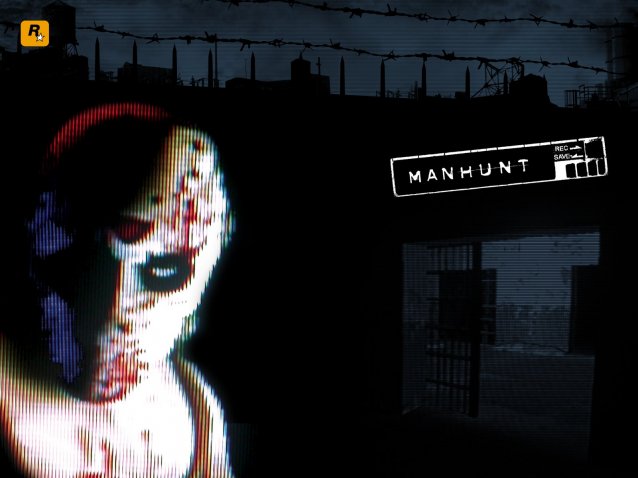

As gamers prepare to give the current generation of consoles its final send-off in eager anticipation of the shiny new machines that lay just over the horizon, Sony’s Japan Studio has taken a different approach. Somewhat quietly sneaking out amidst all of the pre-holiday hoopla is the PlayStation 3 exclusive, Puppeteer.
Puppeteer tells the tale of Kutaro, a young boy who finds himself in puppet form and at the mercy of the terrible Moon Bear King. This stuffed tyrant aims to expand his rule across the entire moon and claim the souls of all the children on Earth. After chomping little Kutaro’s head off, the Moon Bear King casts him aside to begin his evil plot. It’s here that players will assume the role of Kutaro in a quest to help him get his head back, save the Moon and millions of souls. Does this platforming adventure have the charm and the chops be a part of the current-console going away party? Read on to find out.
The standout aspect of this game is its creative direction – which is truly exceptional. The puppet theater stage is not a presentation used often in any medium, and players are in for a unique visual treat from start to finish. Simply put, the game really is quite beautiful. Characters appear carved of wood and costumed in real fabric. Their movements adhering to a distinct marionette-like physicality that allows them to really exist within the space. The sets appear to be just that, physical sets. These are stage decorations that have been built out of artificial materials to closely resememble the real thing.
The game is completely committed to this aesthetic. There is always a stage curtain runner at the top of the screen and lights at the bottom. A spotlight follows Kutaro as he leaps around the scenery. If the player does particularly well in battle or traversing a difficult section, expect to the hear the audience applaud and encouragement pick up. Or let Kutaro just sit there for a while and listen to that same audience get restless. Levels begin and end with the open and close of a curtain, accompanied by some well-delivered narration.
Additionally, home 3D may not have caught on the way electronics manufacturers had hoped, but this is an area where Puppeteer pops, literally. With a fantastic use of depth and the occasional pop-out effect, those with 3D displays at home will want to take advantage of it – for at least a few levels just to check it out.
While Puppeteer never moves away from visually and aurally selling the idea that the player is actually watching a staged puppet theater production, that same choice may play a factor in why the story falls somewhat flat. If most people were about to see a production as lavishly spectacular as Puppeteer aspires to be visually, they would also expect the same considerations to have been taken in the narrative department. Unfortunately, those expectations go, for the most part, unanswered. Those who have played any of Tim Shafer’s games know that the marriage of narrative and visual design can create worlds and characters that players remember long after the controller is set down. Unfortunately, that doesn’t really happen in Puppeteer.
The voice acting is well done (dripping with just the appropriate amount of absurd theatricality), players are taken to a variety of locations that add scale and scope, and gamers will meet, some briefly, a variety of characters who are either there to aid Kutaro’s mission or end it. However, it’s nearly all superficial and at times trite. The pirate character’s mission takes place on a pirate ship, the Horse/Bull bosses are in a Mexican-style village, and the goth girl level is in a cemetery – which is about the level of depth the audience and, by extension, the player are given for motivation in this story.
It’s really one of the saddest shortcomings of Puppeteer. It is a game populated with unique and colorful characters that’s mostly just going through the motions. As an audience member wanting to know more about these puppet characters, it’s a shame that the game really doesn’t expand the narrative experience in gameplay – other than the superficial correlations to surrounding environments. It’s hard to not make comparisons to a game like Psychonauts, where character fears, failures and tragedies not only define motivations in their roles, but also their setting, which in turn informs gameplay. Completing all three levels in a Puppeteer act does unlock a storybook that tells more about the main character from that particular section but it’s too bad that the added story material is so disjointed from the rest of the game. While there are genuine chuckles to be had, and a few off-kilter moments to bask in, it is still a fairly light-hearted (and shallow) affair.
Mechanically, the game really does try its best to offer something different. Early on, Kutaro gets ahold of the magical, oversized scissors, Calibrus. Calibrus is used for battle and traversal as cutting up and down as well as across fabric is the game’s equivalent to flight. Another key mechanic is Kutaro’s ability to swap heads. Kutaro can collect different heads that range from a dinosaur to cheeseburger to a topiary shrub. If a head gets knocked off, players have a few moments to retrieve it, no harm no foul. Lose the head completely and another of your allotted three will take its place. Lose all three heads and the game reloads to the nearest checkpoint.
Both mechanics sound pretty cool, and for awhile, they are. The varied heads allow for different areas of the level to be opened up into bonus stages. Plus they promote multiple playthroughs since some unlockable areas need heads that are found much later on. But that’s really all they do. Act as health. Unlock bonus areas. No real special abilities are given with no real advantage of using one head over the other (most of the time). They don’t do anything unless the player happens to be at the one spot for which each is required.
The scissors face a similar struggle. It’s not that scissor-powered battles and platforming isn’t fun, it’s just that it’s fun the first half a dozen times and then starts to wear a bit thin. Level design gets a little too familiar despite the varying coats of paint, and boss fights get too formulaic despite the costume changes. Both aspects here have great foundations, and for the first few hours offer plenty of enjoyment. But when the rinse-repeat fatigue sets in, it’s hard to not wish more was done with them.
Puppeteer is a hard game to dislike despite its flaws. There is clearly so much passion and charm oozing out of every pixel. For most players, they will probably be able to get over some of the gripes and groans mentioned here and get swept up in the fantastical, other-wordly adventure the game invites the player to be involved in. While these flaws aren’t quite as easily overlooked as say Psychonauts’, they also aren’t enough to squeeze all the joy out of the experience. And while the mechanics aren’t on par with something like Kirby’s Epic Yarn, what is there is serviceable enough – despite the obvious potential for expansion. Players who give in to everything this game has to offer will find an experience unequaled, albeit uneven at times, by most titles. It’s not often a game presents a unique experience and still manages to (mostly) make good on that promise.
___
Puppeteer is available now exclusively on PS3.




 Free eBook: 'Getting Ahead: Three Steps to Take Your Career to the Next Level '
Free eBook: 'Getting Ahead: Three Steps to Take Your Career to the Next Level ' Playing Video Games Will Make You A Better Person. Here's How
Playing Video Games Will Make You A Better Person. Here's How The Amazing Spider-Man 2: How to unlock all 13 Costumes/Suits
The Amazing Spider-Man 2: How to unlock all 13 Costumes/Suits Shannon Lee confirms New Bruce Lee biopic is in the works
Shannon Lee confirms New Bruce Lee biopic is in the works 7 Google Drive Search Tips to Help You Find Anything
7 Google Drive Search Tips to Help You Find Anything